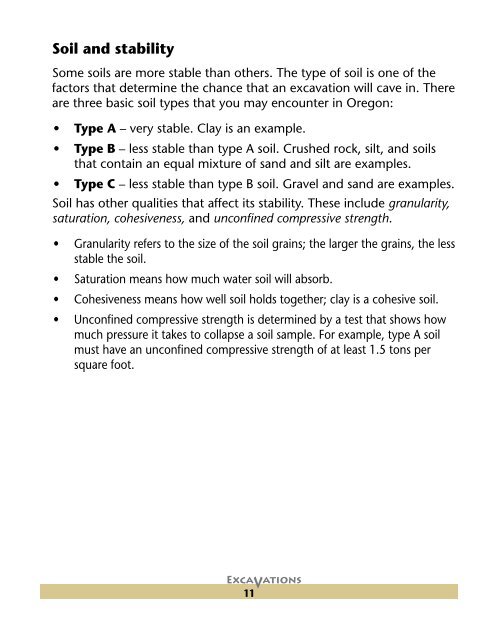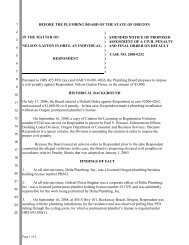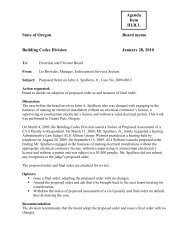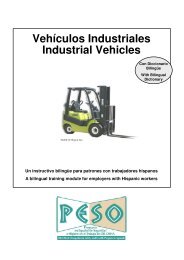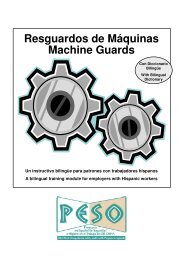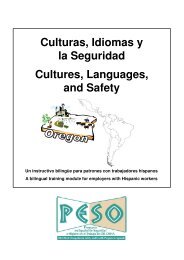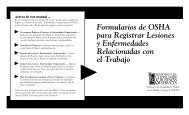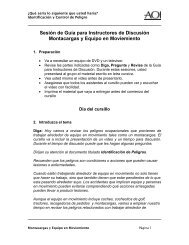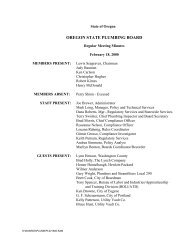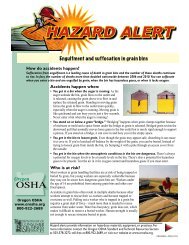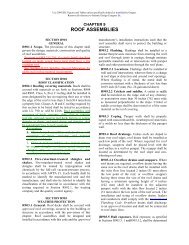ExcAVATIONs
ExcAVATIONs
ExcAVATIONs
You also want an ePaper? Increase the reach of your titles
YUMPU automatically turns print PDFs into web optimized ePapers that Google loves.
Soil and stability<br />
Some soils are more stable than others. The type of soil is one of the<br />
factors that determine the chance that an excavation will cave in. There<br />
are three basic soil types that you may encounter in Oregon:<br />
• Type A – very stable. Clay is an example.<br />
• Type B – less stable than type A soil. Crushed rock, silt, and soils<br />
that contain an equal mixture of sand and silt are examples.<br />
• Type C – less stable than type B soil. Gravel and sand are examples.<br />
Soil has other qualities that affect its stability. These include granularity,<br />
saturation, cohesiveness, and unconfined compressive strength.<br />
• Granularity refers to the size of the soil grains; the larger the grains, the less<br />
stable the soil.<br />
• Saturation means how much water soil will absorb.<br />
• Cohesiveness means how well soil holds together; clay is a cohesive soil.<br />
• Unconfined compressive strength is determined by a test that shows how<br />
much pressure it takes to collapse a soil sample. For example, type A soil<br />
must have an unconfined compressive strength of at least 1.5 tons per<br />
square foot.<br />
11


